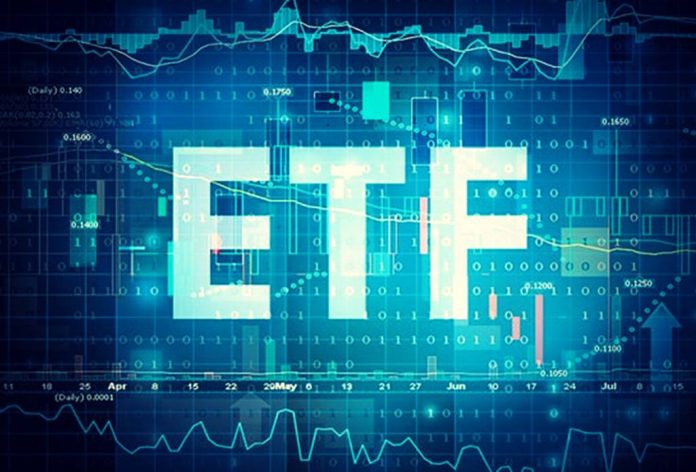When the markets close on New Years’ Eve Friday, investors are likely to have put a record-shattering figure of approximately $900 billion in new assets into U.S.-listed ETFs in 2021.
So, where did those new dollars flow?
ETF.com compiled this list by comparing every ETF’s assets under management on Jan. 1, 2021 with their assets as of Dec. 20, 2021 based on Bloomberg data. Funds that launched this year are not counted.
It shouldn’t be a surprise to see that broad-market equity funds from the likes of BlackRock, Vanguard and State Street raked in the most new assets in a year in which the S&P 500 closed on Monday with its 69th all-time high this year. These 10 funds added more than $511.2 billion in new assets combined through the year, accounting for nearly 56% of all new funds into the industry.
The SPDR S&P 500 ETF Trust (SPY) led the way, with nearly $103 billion in new assets as of Dec. 20, 2021, while the Vanguard S&P 500 ETF (VOO) and the Vanguard Total Stock Market ETF (VTI) added $88.3 billion and $85.8 billion, respectively.
The SPDR Financial Select Sector Fund (XLF) and the Vanguard Real Estate ETF (VNQ) were the only sector-specific funds to make the top 10, and were buoyed respectively by the Federal Reserve’s increasing hawkishness and a particularly hot housing market.
Next, let’s look at the ETFs that had the largest percentage increase in assets during the year. Funds with less than $100 million in assets as of Jan. 1, 2021 are not counted (to adjust for potential skews in growth).
The JPMorgan Equity Premium Income ETF (JEPI) produced a massive 3,088% increase in size as a high-yielding income fund alternative in a low-rate, high-inflation environment that wasn’t kind to fixed income investors.
The strange environment for Treasury bonds also gave the iShares Fallen Angels USD Bond ETF (FALN) a boost in investor interest, as a swath of credit downgrades early in the pandemic set the stage for junk bonds to outperform with fiscal support and an optimistic outlook on recovering from the pandemic. FALN grew by 1,093% in the period.
International ETFs also saw significant growth, with the iShares MSCI Emerging Markets ex China ETF (EMXC), the Dimensional International Core Equity Market ETF (DFAI) and the iShares Global Financials ETF (IXG) growing between 692% in assets 1,113%.
An honorable mention for this list is the ProShares Bitcoin Strategy ETF (BITO), the first bitcoin-linked product in the U.S. The fund ends the year with around $1.23 billion in assets after launching in mid-October, but $1.1 billion of those assets were gathered in its first two days of trading.
The only other ETF that had larger volumes on launch day was the BlackRock U.S. Carbon Transition Readiness ETF (LCTU), which generated $1.16 billion in volume when it debuted in April.
Leave a comment

